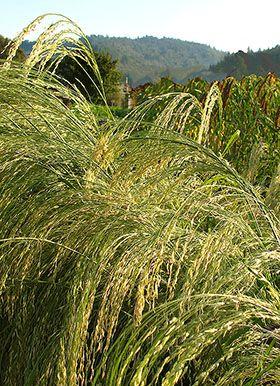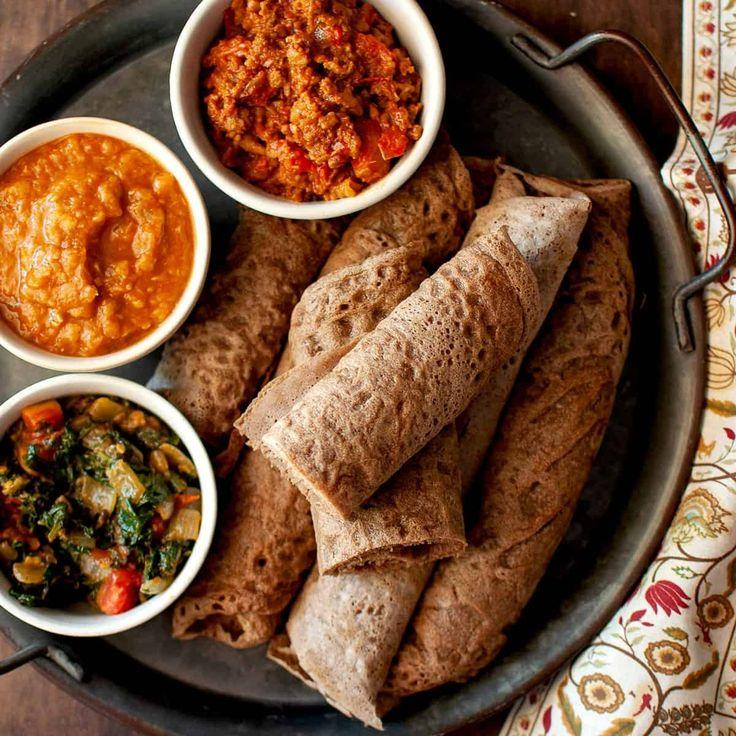Introduction
Teff (Eragrostis tef) may be the world's smallest grain, but its impact spans millennia. Measuring just 1/150th the size of wheat kernels, this grain from Ethiopia has fed civilizations for over 6,000 years and now attracts global attention as a nutritional powerhouse. While other grains require processing to separate bran, germ, and endosperm, teff's minute size makes such separation impossible, ensuring that every grain consumed retains its complete nutritional profile.
The grain's name comes from the Amharic word "teffa," meaning "lost", a reference to how easily these tiny seeds disappear during handling and transport. This characteristic has historically made cultivation labor-intensive, yet teff's resilience and nutritional density have secured its place as a cornerstone of Ethiopian civilization. What teff lacks in size, it compensates for with remarkable adaptability, thriving across diverse altitudes and climate conditions that challenge other crops.

The Origins, Enduring Impact
Archaeological evidence places teff among humanity's earliest domesticated crops, with cultivation dating back to 4000 B.C. The discovery of teff seeds embedded in the bricks of Egypt's Dahshur Pyramids, particularly the Red Pyramid of Sneferu, provides tangible proof of its ancient significance beyond Ethiopian borders. This early adoption speaks to teff's exceptional value; ancient civilizations recognized its worth despite the practical challenges of handling such tiny seeds.
The grain's domestication in the Horn of Africa, specifically Ethiopia and Eritrea, established the foundation for one of the world's most enduring agricultural traditions. Unlike more delicate crops that required optimal conditions, teff consistently provided reliable harvests, supporting population growth and societal stability across countless generations. This reliability transformed teff from merely a food source into a pillar of civilization in the region.
In modern Ethiopia, teff maintains its central role with dramatic impact. The grain occupies 31% of the nation's agricultural land and feeds over 50 million people daily. Beyond sustenance, teff serves as a primary income source for smallholder farmers, often commanding better prices than other cereal crops. Recent trends show increased consumption among rural farmers as living standards improve and awareness of the grain's health benefits grows.
This shift represents more than dietary preference; it reflects economic progress. The ability to consume pure teff, rather than mixing it with other cereals, serves as an indicator of improved economic status. Farmers who once reserved teff for special occasions now incorporate it into daily meals, demonstrating how prosperity enables access to traditional foods with superior nutritional profiles.
Teff's cultural significance permeates Ethiopian society through religious and social customs. During festivals like Christmas, Easter, Epiphany, and New Year, injera, the fermented flatbread made from teff, takes center stage as the meal of honor. Rural communities maintain traditions of serving teff to special guests and during ceremonial occasions, reinforcing its status as a symbol of respect and prosperity.
The grain's utility extends beyond nutrition. Teff straw provides valuable livestock feed, while the grass mixed with mud creates durable, low-cost building materials for shelters and grain storage. This comprehensive utilization demonstrates traditional ecological knowledge that views teff as a complete resource system rather than a single-purpose crop.
Nutritional Facts of Teff Grain
Despite its diminutive size, teff delivers exceptional nutrition that justifies its superfood status. The grain contains 10-13% protein with a complete amino acid profile, including high concentrations of lysine, an essential amino acid often lacking in other cereals. This protein quality proves particularly significant in Ethiopia, where teff provides up to two-thirds of daily protein intake for many individuals.
Teff's macronutrient profile balances energy and nutrition effectively. Complex carbohydrates comprise approximately 73% of the grain, providing sustained energy release without blood sugar spikes. The substantial fiber content (8 grams per 100 grams) includes both soluble and insoluble varieties, plus resistant starch that functions as a prebiotic, nourishing beneficial gut bacteria.
The grain's micronutrient density sets it apart from conventional cereals. Iron content reaches 15.7 mg per 100g, providing 37% of daily requirements, particularly significant given that iron deficiency affects millions globally. Calcium levels at 165.2 mg per 100g exceed those found in milk, while magnesium content (181-184 mg per 100g) supports over 300 enzymatic reactions in the body.
Manganese levels prove particularly remarkable, providing 223% of daily requirements per serving. This trace mineral supports bone development, wound healing, and metabolism of amino acids, cholesterol, and carbohydrates. Teff also provides zinc (4.4 mg per 100g), essential for immune function and protein synthesis, plus potassium, phosphorus, copper, and selenium.
B vitamin content includes thiamine, riboflavin, niacin, pyridoxine, and folate, nutrients crucial for energy metabolism, nervous system function, and cellular repair. Uniquely among ancient grains, teff contains vitamin C, adding antioxidant properties to its nutritional profile. The grain also provides omega-3 and omega-6 fatty acids, particularly alpha-linolenic acid, despite its low overall fat content.
Teff's gluten-free nature makes it ideal for individuals with celiac disease or gluten sensitivity, while its low-to-moderate glycemic index (ranging from 36 for fermented injera to 74 for whole grain) helps regulate blood sugar levels. This combination of complete nutrition and dietary compatibility positions teff as an ideal grain for different nutritional needs.
Traditional Medicine Meets Modern Science

Ethiopian traditional medicine has recognized teff's therapeutic properties for millennia, with many applications now validated by modern nutritional science. Traditional healers utilized not just the grain but roots, leaves, bark, and shoots for various wellness purposes, demonstrating a comprehensive understanding of the plant's medicinal potential.
Red teff holds particular significance in traditional medicine, especially for addressing anemia. Traditional healthcare workers routinely recommend red teff soup for postpartum women, believing it increases blood levels and supports recovery. Hospital-based studies in Ethiopia have confirmed this wisdom. Women consuming teff daily show significantly lower rates of anemia compared to those following other dietary patterns.
The fermentation process used in preparing injera enhances teff's medicinal properties. Fermentation reduces phytic acid content, which can inhibit mineral absorption, while increasing bioavailability of iron, calcium, and other essential minerals. This traditional processing technique also generates additional B vitamins and creates beneficial lactic acid bacteria with probiotic potential.
Traditional applications extend beyond anemia treatment. Teff consumption supports digestive health through its high fiber content, which prevents constipation and promotes regular bowel movements. The grain's prebiotic fibers nourish beneficial gut bacteria, contributing to overall gastrointestinal wellness. Its low-FODMAP nature makes it particularly suitable for individuals with sensitive digestive systems.
Bone health represents another area where traditional knowledge aligns with modern understanding. Teff's combination of calcium, magnesium, phosphorus, and lysine supports bone density and strength. Traditional beliefs about teff preventing osteoporosis find scientific backing in these mineral concentrations and their synergistic effects on bone metabolism.
Energy enhancement through teff consumption reflects its complex carbohydrate content and steady glucose release. Traditional recognition of teff as an energy-boosting food aligns with modern understanding of sustained energy from low-glycemic carbohydrates. Athletes increasingly recognize teff as a "runner's superfood" for endurance activities.
Fertility support represents a fascinating intersection of traditional belief and modern science. Traditional practices include consuming teff roots to enhance fertility, while modern research suggests that teff's low glycemic index may support hormonal balance by maintaining stable blood sugar levels. This stability can influence menstrual cycle regularity and ovulation patterns.
Brain health benefits derive from teff's rich B vitamin content, magnesium, and iron. These nutrients support neurological function, neurotransmitter synthesis, and oxygen transport to brain tissues. Traditional observations about teff supporting cognitive function find validation in these nutritional mechanisms.
Cultural Heritage
Injera remains teff's most celebrated culinary application, a spongy, sour flatbread that serves simultaneously as plate, utensil, and primary carbohydrate in Ethiopian cuisine. The preparation process represents both culinary art and nutritional science. Teff flour mixed with water ferments for 2-3 days, developing characteristic sourness and creating the enzymatic conditions that enhance mineral bioavailability.
The fermentation process involves complex microbial activity that transforms teff's nutritional profile. Lactic acid bacteria reduce pH levels, creating an environment that inhibits pathogenic organisms while promoting beneficial microbes. This natural preservation method also increases phenolic content and antioxidant potential, demonstrating how traditional food processing can enhance nutritional value.
Injera's cultural significance transcends nutrition. The bread serves as the foundation for communal dining, with various dishes arranged on its surface for shared consumption. Diners tear pieces of injera to scoop up accompaniments, creating an interactive eating experience that strengthens social bonds. This communal aspect reinforces teff's role in maintaining cultural traditions and social cohesion.
Beyond injera, traditional Ethiopian cuisine incorporates teff into various preparations. Porridges like atmit or muk provide nourishing breakfast options, while kitta offers an unleavened bread alternative. Teff also forms the base for traditional alcoholic beverages, including tella (opaque beer) and katikala or (distilled spirits), often enhanced with gesho plant leaves for flavor and fermentation control.
Modern culinary applications showcase teff's versatility beyond traditional preparations. Its mild, nutty flavor profile adapts well to contemporary recipes, functioning as a direct wheat flour substitute in pancakes, breads, cakes, cookies, and pasta. The grain's natural binding properties and fine particle size create smoother batters and more tender textures in gluten-free baking applications.
Whole teff grain preparation resembles quinoa cooking methods, making it accessible to international consumers familiar with ancient grain preparation. The cooked grain works well in breakfast cereals, grain salads, soups, and stews. Its subtle flavor allows teff to complement rather than dominate dish profiles, making it suitable for diverse culinary applications.
Nutritional enhancement represents another modern application. Adding just 5% teff flour to wheat bread significantly improves nutritional content without compromising taste or texture. This approach allows a gradual dietary transition while maximizing nutritional benefits, making teff accessible to consumers hesitant about dramatic dietary changes.
Teff in Sustainable Agriculture
Teff's exceptional climate resilience positions it as a crucial crop for addressing global food security challenges in an era of climate change. The grain demonstrates remarkable drought tolerance, requiring significantly less water than major cereals like wheat and barley. This water efficiency proves increasingly valuable as climate variability affects traditional growing regions worldwide.
Environmental adaptability extends beyond drought tolerance. Teff thrives across diverse altitudes, from sea level to high mountain regions, and tolerates both waterlogged soils and arid conditions. This flexibility allows cultivation in marginal lands unsuitable for other crops, potentially expanding agricultural productivity without competing for prime farmland.
Natural pest resistance reduces chemical input requirements, supporting sustainable agricultural practices. Teff's inherent resilience minimizes pesticide needs while maintaining yields, contributing to environmental protection and reducing production costs for farmers. This combination of low inputs and reliable outputs makes teff particularly attractive for small-scale and organic farming systems.
The grain's contribution to biodiversity conservation deserves recognition. Traditional teff varieties maintain genetic diversity that could prove crucial for future breeding programs addressing climate challenges. Ethiopian farmers continue cultivating numerous teff varieties, each adapted to specific local conditions, preserving valuable genetic resources for global food security.
Teff's potential impact on UN Sustainable Development Goals extends across multiple areas. The crop contributes to poverty reduction through improved farmer incomes, zero hunger through nutritional security, good health through dietary quality, responsible consumption through sustainable production, and climate action through resilient agriculture. This multi-dimensional contribution demonstrates how traditional crops can address contemporary global challenges simultaneously.
The Challenges and Innovation

Traditional teff cultivation methods present ongoing challenges that limit productivity and efficiency. Hand-sowing techniques, while maintaining cultural traditions, prove labor-intensive and sometimes result in uneven plant distribution. Manual harvesting with sickles and threshing by animals, though time-tested, constrains scalability for meeting growing demand.
Lodging represents a significant agronomic challenge where teff stems bend or fall over, reducing both yield and grain quality. This problem occurs when plants grow too tall or when weather conditions stress the crop during critical growth periods. Lodging also complicates mechanical harvesting and can lead to significant losses if not addressed promptly.
Modern scientific approaches address these traditional challenges through innovative breeding programs. Comprehensive genome sequencing has identified genetic markers associated with desirable traits, enabling more precise breeding strategies. Gene editing techniques, including modifications to the SD-1 gene for lodging resistance, offer potential solutions to persistent agronomic problems.
Success stories demonstrate the potential for improvement. Ethiopian farmers increasingly adopt high-yielding varieties like Quencho, which combines traditional hardiness with improved productivity. These varieties maintain teff's essential characteristics while addressing practical cultivation challenges, showing how modern science can enhance rather than replace traditional knowledge.
Global adoption faces additional barriers, including limited awareness of teff's nutritional benefits and perceived processing complexities. Many potential consumers remain unfamiliar with preparation methods, while others question whether the benefits justify learning new cooking techniques. Educational initiatives and recipe development could address these knowledge gaps.
Economic considerations create delicate balances between local food security and export opportunities. Ethiopia's experience with teff export policies illustrates these tensions—initial bans aimed to prevent domestic price increases and ensure local food access, while subsequent relaxations recognized economic opportunities for farmers and the diaspora, the community needs.
The Future Prospects of Teff as a Grain
Teff's trajectory from old staple to modern superfood reflects broader trends in nutrition and sustainable agriculture. Growing consumer interest in gluten-free, nutrient-dense foods aligns perfectly with teff's natural properties. As awareness spreads, demand continues expanding beyond traditional Ethiopian and Eritrean communities to health-conscious consumers worldwide.
Research initiatives continue exploring teff's potential applications in functional foods and therapeutic nutrition. Studies investigate optimal processing methods for maximizing nutritional benefits, variety development for specific growing conditions, and incorporation into processed foods for mass market appeal. This scientific attention validates traditional knowledge while opening new possibilities for utilization.
International development organizations increasingly recognize teff's potential for addressing malnutrition and food insecurity in developing regions. The grain's complete amino acid profile, high mineral content, and climate resilience make it particularly suitable for programs targeting maternal and child nutrition in challenging environments.
Teff cultivation expansion faces both opportunities and responsibilities. While global demand creates economic opportunities for Ethiopian farmers, ensuring that local communities retain access to their traditional food remains paramount. Sustainable development approaches must balance economic growth with cultural preservation and food sovereignty.
The grain's story offers lessons for revitalizing other traditional crops with modern relevance. Teff demonstrates how ancient wisdom, validated by contemporary science, can contribute to solving current challenges in nutrition, sustainability, and food security. This success model encourages exploration of other neglected crops with similar potential.
Conclusion
Teff is more than a grain; it embodies the intersection of ancient wisdom and modern necessity. From its origins in Ethiopian highlands to its emerging role in global nutrition, teff demonstrates how traditional foods can address contemporary challenges while maintaining cultural significance.
The grain's journey from "lost" seed to recognized superfood illustrates the value of preserving and promoting indigenous food systems. Its complete nutritional profile addresses modern dietary needs, while its climate resilience offers solutions for sustainable agriculture in an uncertain environmental future.
As global food systems face increasing pressure from climate change, population growth, and health challenges, teff provides a proven model for resilient, nutritious agriculture. Its success encourages broader recognition that solutions to modern problems often lie in traditional knowledge, waiting for science to validate what communities have known for generations.
Refrences
- Advanced Health. n.d. "Teff Handout." Accessed July 26, 2025. https://advancedhealth.com/wp-content/uploads/2021/06/45-Jun-Teff-handout.pdf
- Gebrehiwot, Bereket, and Ndinda, Catherine. 2025. “The role of Teff crop in Ethiopian life, consumption, and contribution to rural livelihoods.” CABI Agriculture and Bioscience 5, no. 94. https://www.researchgate.net/publication/384590858_The_role_of_Teff_crop_in_Ethiopian_life_consumption_and_contribution_to_rural_livelihoods
- Girma, Getachew, Endale, and Gizaw. 2025. “Traditional and Integrative Medicine: Ethiopian Medicinal Plants Teff (Eragrostis tef) and Garlic (Allium sativum) as a Traditional and Food Medicine as well as the High Impact of AgroEconomic Value of.” ResearchGate. https://www.researchgate.net/publication/383213593_Traditional_and_Integrative_Medicine_Ethiopian_Medicinal_Plants_Teff_Eragrostis_tef_and_Garlic_Alli-_num_sativum_as_a_Traditional_and_Food_Medicine_as_well_as_the_High_Impact_of_AgroEconomic_Value_of_
- Melaku, Tadesse, and Daba, Dires. 2015. “Teff (Eragrostis tef): A Tropical Low-Risk Cereal with High Potential for Global Food Security.” Journal of Food Science and Technology 52, no. 12: 7578–7585. https://pmc.ncbi.nlm.nih.gov/articles/PMC4571201/
- Oldways. n.d. “Heart-Healthy Recipes from the African Heritage Diet.” Accessed July 26, 2025. https://oldwayspt.org/blog/heart-healthy-recipes-from-the-african-heritage-diet/
- ResearchGate. n.d. “Ethnobotanical Study of Medicinal Plants Used by Traditional Healers in Ethiopia.” Accessed July 26, 2025. https://pmc.ncbi.nlm.nih.gov/articles/PMC3852788/
- Scalar. n.d. “Eragostis tef: From Injera to Fertility and Everything Else in Between.” Accessed July 26, 2025. https://scalar.usc.edu/works/plants-and-people/eragostis-tef-from-injera-to-fertility-and-evertything-else-in-between
- Teffco. n.d. “A Comparison of Teff and Millet.” Accessed July 26, 2025. https://teffco.com/a-comparison-of-teff-and-millet/
- Teffco. n.d. “History of an Ancient Grain.” Accessed July 26, 2025. https://teffco.com/history-of-an-ancient-grain/
- Teffco. n.d. “Teff Flour Benefits.” Accessed July 26, 2025. https://teffco.com/what-is-teff/teff-flour-benefits/
- Teffco. n.d. “Teff Recipes.” Accessed July 26, 2025. https://teffco.com/teff-recipes
- Teffco. n.d. “What is Teff?” Accessed July 26, 2025. https://teffco.com/what-is-teff/
- Teffie. n.d. “Teff 101 with Dr. Scott Robinson.” Accessed July 26, 2025. https://teffie.me/blogs/teffie/teff-101-with-dr-scott-robinson
- Tuasaude. n.d. “Teff.” Accessed July 26, 2025. https://www.tuasaude.com/en/teff/
- University of Colorado State. n.d. “Teff.” Accessed July 26, 2025. https://colostate.pressbooks.pub/understudiedindigenouscrops/chapter/teff/
- Wikipedia. n.d. “Teff.” Accessed July 26, 2025. https://en.wikipedia.org/wiki/Teff















Share